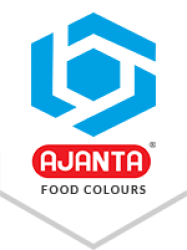_1740409330.jpg)
When it comes to the food and beverage industry, synthetic food colours are exceptionally important. They enhance the aesthetic of the product which in turn captures the interest of customers boosting the sales and brand recognition of the company. However, colour efficacy and stability are impacted by critical factors like pH and temperature - two common challenges faced by food industry producers. For producers, being aware of these issues is vital in order to maintain the standard of their product in the industry. In this article, we will take a look at how pH and temperature affect product colour quality and stability.
The Role of pH in Synthetic Food Colour Performance
The stability and vibrancy of synthetic food colours can be significantly affected by pH levels. Each food colour has its own certain responsiveness to pH levels, and variability in these levels can lead to irrational reactions which may severely affect the company's consumer base, leading to products recalls and mercato regulatory sanctions.
Common Problems Faced by Manufacturers Due to pH Variations
Colour Shifts: With variations of pH level, a good number of synthetic food colours change their colour tints, especially Red 40 known as Allura Red AC or FD&C Red 40 shifts in an acidic environment from bright red to a duller tone.
Loss of Colour Intensity: At very high pH levels, colour alterations occur, resulting in products losing their aesthetic appeal. This leads to product recalls, decreases in sales, and negative impacts to the reputation of the brand.
Precipitation Issues: Some colours, especially lake colours may precipitate out of the solution in highly acidic or alkaline conditions that lead to uneven distribution of colour on products which makes them ugly.
Incompatibility with Ingredients: Ingredients such as citric acid, sodium bicarbonate, or preservatives may alter the pH which impacts product colour stability.
Solutions for Manufacturers
Select pH-Stable Colours: Manufacturers can choose those synthetic food colours that are specially formulated to withstand the pH range of your products.
Adjust pH Levels: Manufacturers can prevent unwanted colour shifting by maintaining a controlled pH range during product manufacturing.
Use Buffering Agents: Incorporate buffering systems to stabilize pH levels and protect colour integrity.
The Impact of Temperature on Synthetic Food Colours
During product manufacturing, storage, or transportation it goes through various temperatures that impact the performance of synthetic food colours. Extreme heat or cold can degrade, oxidize, or fade synthetic food colours, compromising their effectiveness.
Common Problems Faced by Manufacturers Due to Temperature Variations
Heat-Induced Fading: When manufacturers cook, pasteurize, or bake foods at high temperatures it can discolour or alter products, making the final product undesirable.
Oxidation and Decomposition: Certain colours break when they are exposed to heat for a long time which reduces their effectiveness.
Uneven Colour Distribution: When products are exposed to fluctuating temperatures their colour may lose its uniformity resulting in patchy or inconsistent colouring on the products.
Storage Instability: Improper product storage at high temperatures can accelerate colour degradation on products that reduces their shelf life.
Solutions for Manufacturers
Choose Heat-Stable Colours: Choose those synthetic food colours that are resistant to high temperatures, especially for baked goods that face more heat compared to other food products.
Control Processing Temperatures: Manufacturers should maintain optimal temperature conditions during product manufacturing to prevent colour fading.
Store Properly: Store the products in a dry and cool place to enhance the product’s longevity and performance.
Use Protective Packaging: Manufacturers should use the packaging for their products that reduce exposure to heat and oxygen which help in the preservation of colour stability.
Conclusion
The quality of colour plays a crucial role in maintaining the product's pH and temperature which makes the product appealing and attractive for a long time. Manufacturers can source these colours from reputed and trusted synthetic food colour manufacturers like Ajanat Food Colours, a leading manufacturer of high-quality synthetic food colour in India with over 75 years of legacy.
At Ajanta Food Colours, we received various awards and certificates from India and from other countries where we export our high-quality, FDA-approved food colours that show the quality and safety of our colours for human consumption. Some of the prestigious awards and certificates include the Arch of Europe Award, the Bureau of Indian Standards (BIS) Award, certifications from the Food Safety and Standards Authority of India (FSSAI), the US Food and Drug Administration (US FDA), as well as Halal, Alcumus ISOQAR, Star-K Kosher, Food Safety System 22000 (FSSC 22000), and ISOQAR certifications, among others.




